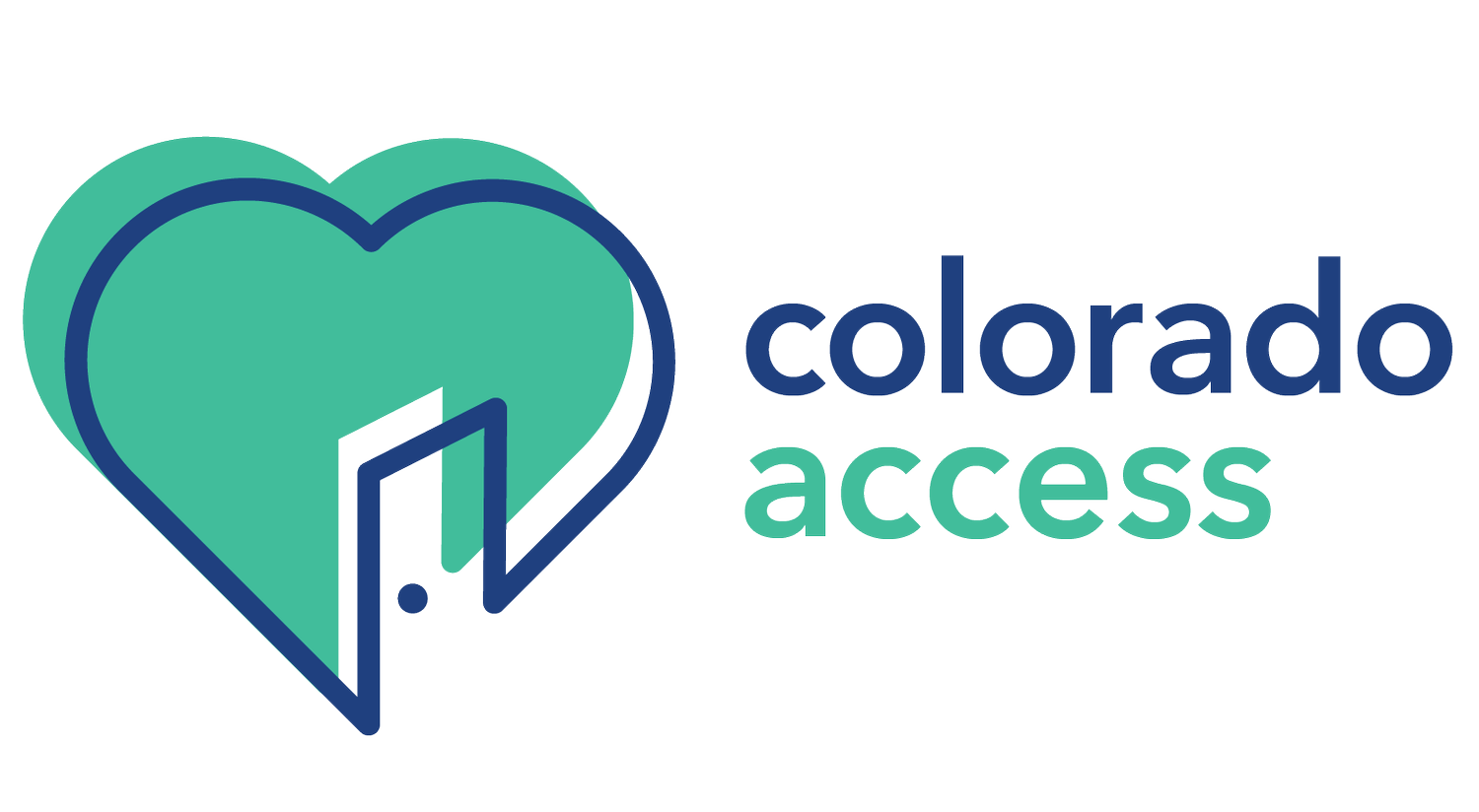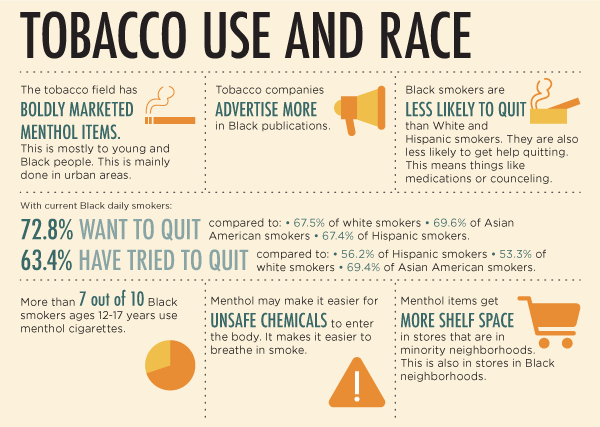
Tobacco and Ethnic and Racial Disparities
Tobacco use is much higher with certain ethnic groups and races. Many tobacco products are also used at higher rates in these populations. Certain ethnic groups and races have a higher risk of tobacco-related disease and death. This is due to things like health care access and quality. It is also due to unfair distribution of health resources.
TOBACCO AND BLACK COMMUNITIES
Black communities in the U.S. are disproportionately impacted by tobacco and systemic racism. Black smokers often smoke less cigarettes per day and start smoking later in life. But they are still 18 to 20 percent more likely to die from smoking-related diseases than white smokers.
The top three causes of death in Black Americans are heart disease, cancer, and stroke. Tobacco use is a big cause of these. Black Americans are also more likely to be exposed to secondhand smoke than any other racial or ethnic group.
Click here to learn more about the disproportionate health impacts of tobacco use on Black communities.
The tobacco industry has aggressively marketed menthol products to Black Americans. They have used culturally tailored advertising and messages to do this.
Black adults have the highest rate of menthol cigarette use than any other race or ethnic group. Menthol cigarettes are easier to smoke and harder to quit. They can also be more addictive than regular cigarettes.
Click here to learn more about the impact of tobacco and the history of strategic marketing of menthol on the Black community.
TOBACCO AND AMERICAN INDIAN AND ALASKA NATIVE COMMUNITIES
The tobacco plant is a vital part of ceremonial, religious, and medicinal practices in some American Indian communities. But tobacco use for cultural practices is different from cigarette smoking.
Traditional use of the tobacco plant is a vital part of many cultural practices. But smoking it in cigarettes causes poor health outcomes.
Smoking raises your chance of getting type 2 diabetes by 30 to 40 percent. Diabetes is the fourth top cause of death for American Indians and Alaska Natives.
American Indians and Alaska Natives have higher rates of smoking than any other ethnic group or race in the U.S. They also have a higher risk of dying from and getting tobacco-related diseases.
Experts have linked this to social and economic reasons. This means things like poverty and quality of health care. It also means funding for the Indian Health Service. Click here to learn more about health disparities in American Indian and Alaska Native communities.
TOBACCO AND LATINO/LATINX AND HISPANIC COMMUNITIES
Americans of Latino or Hispanic origin often smoke less than other ethnic groups and races. But smoking is more common with Latinx adults who were born in the U.S.
Americans of Latino or Hispanic origin tend to have less insurance coverage. They also tend to have less access to health care. This makes them less likely to get health care when they need it. It also makes them less likely to have access to treatments to help them quit smoking.
But Latinx adults quit smoking more often than other ethnic groups and races. Click here to learn more about smoking and quitting behaviors for Latino and Hispanic Americans.
TOBACCO AND ASIAN AMERICAN, NATIVE HAWAIIAN, and PACIFIC ISLANDER COMMUNITIES
Cigarette smoking behaviors are different for each of these groups. Things like social, environmental, cultural, and individual factors all account for this.
The three leading causes of death among these groups are cancer, heart disease, and stroke. Smoking can cause all of these.
Asian Americans and Pacific Islanders tend to be light smokers. They do not usually smoke every day. But some factors that may cause them to smoke more often are:
A recent move to the U.S.
Living in poverty.
Knowing little about the health effects of tobacco use.
In Hawaii, about 13% of adults and 10% of youth smoke cigarettes. But these numbers are much higher with Native Hawaiians. About 27% of Native Hawaiian adults and 13% of youth smoke cigarettes.
For Native Hawaiians, the highest smoking rates are with:
Households below the poverty line.
People who have less than a high school education.
People who are unemployed.
People ages 25 to 34.
Click here to learn more about tobacco use with Asian Americans, Native Hawaiians, and Pacific Islanders.

